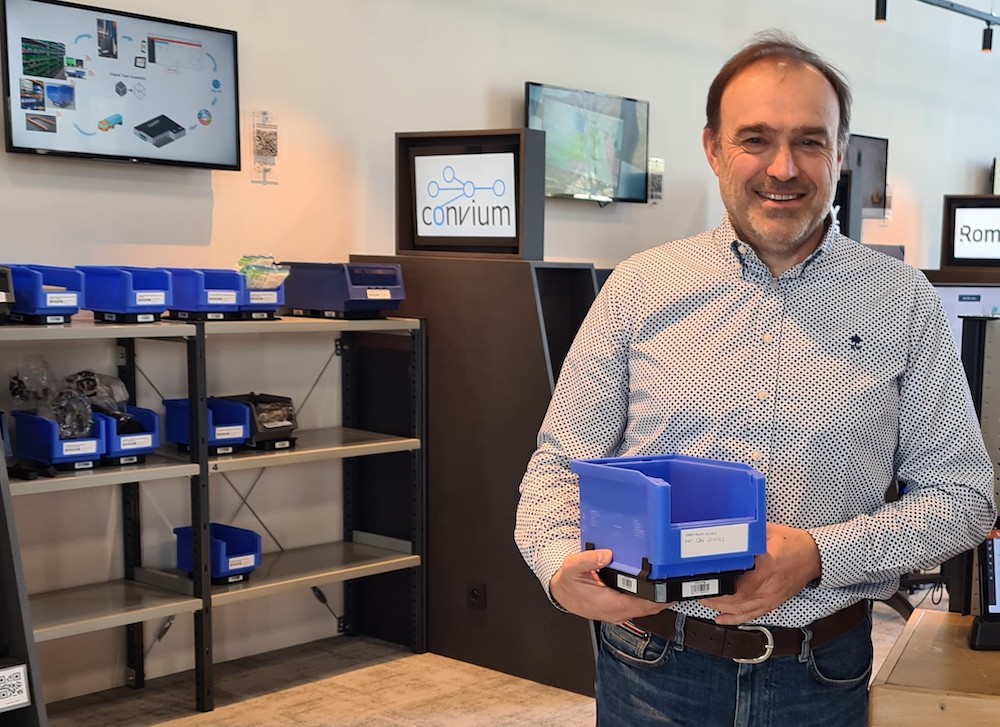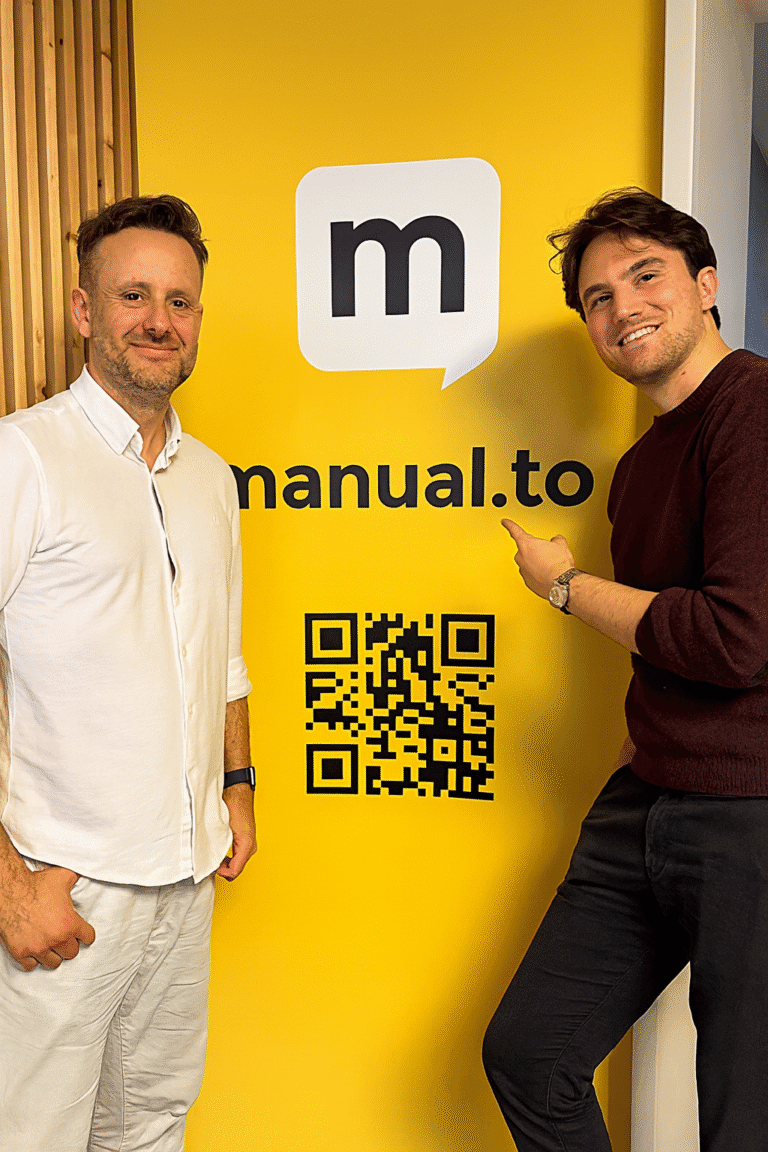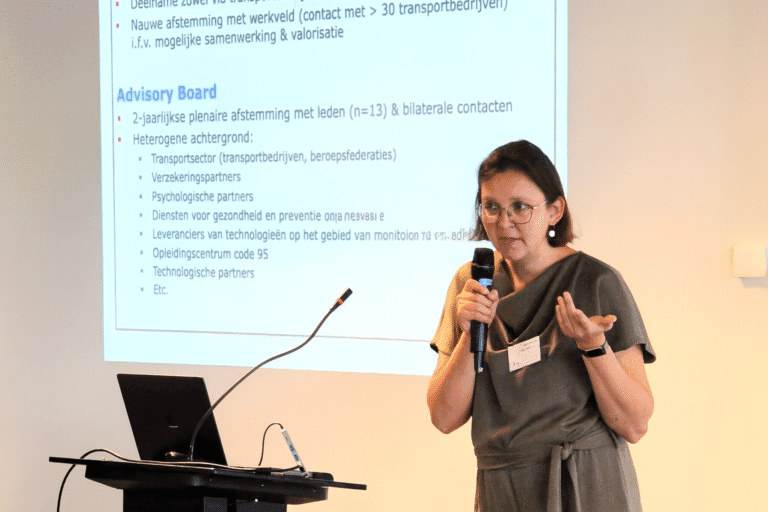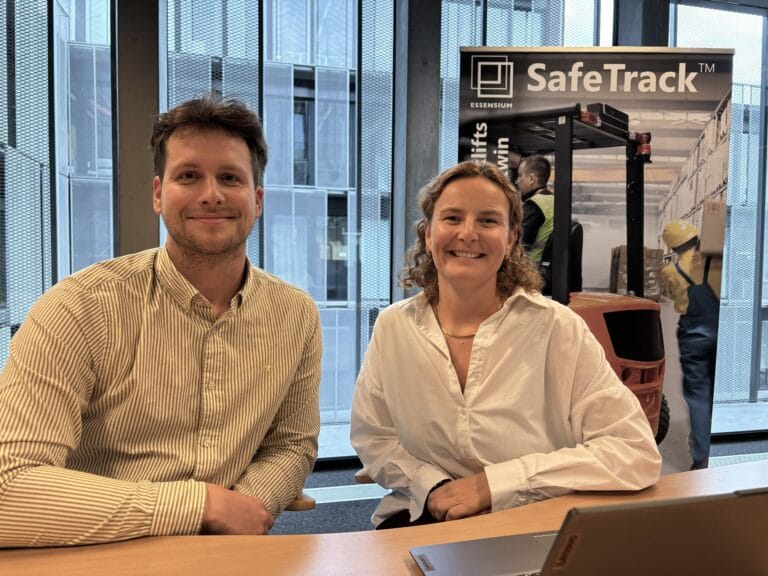Steven Vermuyten (Convium): ‘OSWO reduction in stock management’

All companies hold hundreds of products in stock to carry out their activities. These could be critical reserve parts or replacement items but could also be office consumables, tools, transport packaging and so on. ‘This stock is often managed on the OSWO or ‘Oh shit, we’re out!’ principle and this is what we aim to avoid,’ explains Steven Vermuyten, founder of Start2Scale-up partner Convium.
Steven comes from the world of industrial supply. In this sector, so-called MRO (Maintenance, Repair and Operations) goods, or all the products that are necessary to keep the company operational, are central. ‘During my contact with customers, usually SMEs, I noticed that their stock management could be highly inefficient and sometimes even a bit unprofessional. Many of them do not have reliable data about what is in stock, how often they use certain items and when they should reorder. This observation led to my idea, six years ago, of supporting these businesses in terms of stock management and I started working with Convium,’ he explains.
Today, this start-up, which partnered with Log!Ville around six months ago, focuses on three core activities: the provision of advice, support with the implementation of a stock system, and the launch of TeDaLos sensors for ‘unit-inventories’.
Analysis and recommendations
‘As mentioned before, many SMEs do not know how to manage stock efficiently, often end up in OSWO situations and then have to order expensive additional stock. We help them to evaluate their stock management and optimise processes, often by connecting technologies in order to make procedures more efficient. Automation is particularly good at offering solutions when processes are repetitive and manually maintaining stock levels can be very time-consuming. But I make my recommendations independently of technology suppliers,’ Steven adds.
Support
A second area is supporting businesses with the implementation of technology, i.e. hardware, software or a combination of the two, which helps them to optimise their stock management processes. These advanced technical solutions include QR and barcode scanning, industrial vending machines, goods-to-person systems or digital IoT inventory sensors, but always at the scale of a modal SME.
‘We help them figure out which technical solutions fulfil their needs most effectively, calculate what this investment will provide (ROI) and then roll out and manage the selected solution.’
Digital Twin inventory sensors
‘Weighing is an excellent method for counting stock. If you know how much an item weighs, you can easily calculate how many items are in a container. That is why we work with TeDaLos, an Austrian company that develops weighing sensors based on Internet of Things. Their autonomous sensors weigh load carriers, from small parts containers to pallets,’ Steven explains.
The sensors work on batteries and send their data to a cloud application using LPWAN technology (low-power wide-area network) which maintains quantities as well as the patterns of usage. It monitors levels, provides notifications when certain thresholds are reached, and issues alarms and reordering requests.
‘For an SME, TeDaLos is a really interesting solution as the technology has a fairly low threshold and you do not need complex hardware, a power supply or cabling to transfer the data. The solution is also very flexible: imagine that you have 500 load carriers for your stock and you decide to fit a weighing sensor to the 100 most critical stock items. You can then manage this stock without any human intervention. The sensor simply sends the data to the cloud platform once or twice a day, where it is processed. If you like, a project can then be initiated to link the stock data to a WMS, a stock management system. You can even monitor the usage of the stock using an app on your smartphone,’ he adds.
Hidden costs
According to Steven, however, it is not easy to persuade Flemish SMEs to implement this type of innovation. ‘They are rather conservative and often see technology as an expensive solution that is out of their reach. Staff also often regard the implementation of innovative stock systems as a change process that must prove its worth before it is accepted. I have also noticed that many businesses overlook the costs associated with inefficiency and have limited insights into the hidden costs and the potential gains that this type of automation could bring about.’
Log!Ville
‘Log!Ville offers the ideal setting for reaching out to these SMEs and promoting this technology. Everybody is bombarded with promotions via email and social media but to what extent do businesses recognise themselves in this information about innovation? These concepts remain abstract whereas Log!Ville is visible and tangible. One of our tours can be a genuine eye-opener and reinforce how important it is to embrace innovation,’ he adds.
He believes that a presence at Log!Ville offers a certain stamp of reliability too. ‘There is much talk about potential co-creation opportunities for the partners but the cross-pollination process affects other areas too, such as promotion. One partner, for example, could hear about customers who are looking for a solution that could be offered by another partner. Log!Ville, therefore, also serves as a centre for interaction between reliable parties with complementary solutions,’ concludes Steven.



